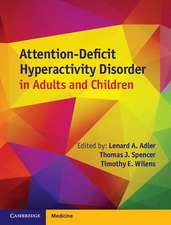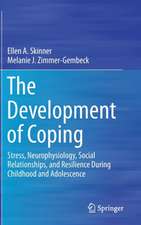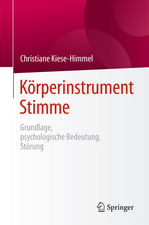Treatment of Personality Disorders
Editat de Jan J.L. Derksen, Cesare Maffei, Herman Groenen Limba Engleză Paperback – 18 noi 2010
| Toate formatele și edițiile | Preț | Express |
|---|---|---|
| Paperback (1) | 1415.01 lei 6-8 săpt. | |
| Springer Us – 18 noi 2010 | 1415.01 lei 6-8 săpt. | |
| Hardback (1) | 1424.16 lei 6-8 săpt. | |
| Springer Us – 30 dec 1999 | 1424.16 lei 6-8 săpt. |
Preț: 1415.01 lei
Preț vechi: 1489.49 lei
-5% Nou
Puncte Express: 2123
Preț estimativ în valută:
270.76€ • 295.03$ • 228.16£
270.76€ • 295.03$ • 228.16£
Carte tipărită la comandă
Livrare economică 23 aprilie-07 mai
Preluare comenzi: 021 569.72.76
Specificații
ISBN-13: 9781441933263
ISBN-10: 1441933263
Pagini: 320
Ilustrații: VIII, 307 p.
Dimensiuni: 178 x 254 x 17 mm
Greutate: 0.55 kg
Ediția:Softcover reprint of hardcover 1st ed. 2000
Editura: Springer Us
Colecția Springer
Locul publicării:New York, NY, United States
ISBN-10: 1441933263
Pagini: 320
Ilustrații: VIII, 307 p.
Dimensiuni: 178 x 254 x 17 mm
Greutate: 0.55 kg
Ediția:Softcover reprint of hardcover 1st ed. 2000
Editura: Springer Us
Colecția Springer
Locul publicării:New York, NY, United States
Public țintă
ResearchDescriere
It has been almost twenty years since DSM-III created a major shift in psychi atric classification procedures and in diagnostic and treatment practice by introducing the multi-axial system and, for our patients specifically, the Axis II: Personality Disorders. Researchers and clinicians were forced to focus on many issues related to the field of personality and its disorders. This meant an immense impetus for research, both empirical and theoretical. Many recent developments are described in this book, as reviews or as original articles. This book also covers developments in Europe as well as in North America. Important questions still remain unanswered, such as: What is the relationship between the different clusters: A, B, & C? Are we talking about dimensions, categories, or typologies? What can be done for patients who have more than one personality disorder? Is a pro typical approach required? Consequently, is a multiconceptual approach in treatment and research required? The authors contribute to this discus sion and provide guidelines for further thinking in research and treatment planning. For clinicians, it is of major importance to know whether the disorder can be influ enced by treatment, and whether permanent change is really possible. A very impor tant question is whether a person indeed has a personality disorder, and how this diagnosis affects clinical practice.
Cuprins
Preface. Part I: Biological foundations of personality disorders. Genetics of personality disorders; S. Torgerson, M. Battaglia. Psychobiology of personality disorders; L.J. Siever. The implication of recent research on the etiology and stability in personality and personality disorder for treatment; W.J. Livesley. Part II: Psychological foundations of personality disorders. Psychodynamic research can help us to improve diagnosis and therapy for personality disorders: the case of defense mechanisms; J.C. Perry, et al. Attachment, the development of the self and its pathology in personality disorders; P. Fonagy. Trauma and personality; F. Madeddu, A. Pazzagli. Adolescence and personality disorders: Current perspectives on a controversial problem; E. de Vito, et al. Part III: Diagnostic models of personality disorders. Integrative perspectives on the personality disorders; Th. Millon. A multidimensional model of personality disorders and their treatment; J. Paris. The structure of DSM-IV borderline personality disorder and its implication for treatment; C. Maffei, A. Fossati. The relationship between anxiety disorders and personality disorders: prevalence rates and comorbidity models; C. van Velzen, P. Emmelkamp. Part IV: Treatment of personality disorders. Psychodiagnostics and indications for treatment in cases of personality disorder: Some pitfalls; J.J.L. Derksen, H. Sloore. The psychotherapeutic treatment of borderline patients; O.F. Kernberg. Functional analysis of borderline disorder behavioral criterion patterns: Links to treatment; J. Waltz, M. Linehan. Pharmacological treatment of personality disorders: A review; P. Moleman, et al. New drugs in the treatment of borderlinepersonality disorder; F. Benedetti, et al. The narcissistic personality disorder and addiction; P. Vaglum. Pharmacotherapy for patients with personality disorders: Experiences from a group analytic treatment programme; S. Friis, et al. A new interpersonal theory and the treatment of dependent personality disorder; J. Birtchnell, G. Borgherini. HIV infection, personality structure and psychotherapeutic treatment; R. Visintini, et al. Index.

























